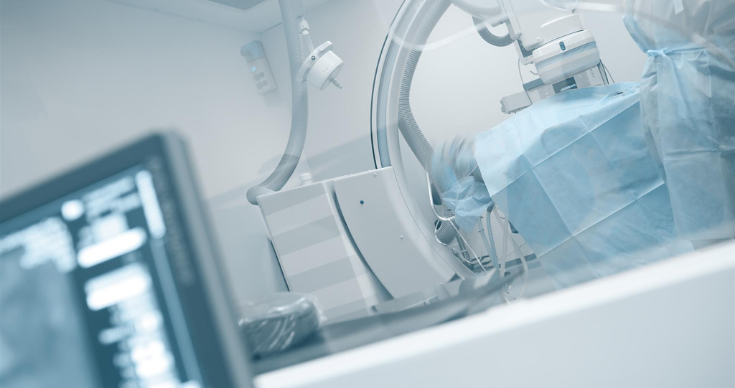A Brief Introduction To Cardiac Catheterization
The heart is a wonderful organ that performs the crucial function of pumping blood into the body. Sometimes it happens that the functions of the heart get affected due to some illness or defect. Then it requires extensive treatment and accurate diagnosis, which plays an important role in keeping it healthy. Thus, today, we will discuss one particular diagnostic procedure, the cardiac catheterization.
What Is Cardiac Catheterization?
Cardiac catheterization is a diagnostic procedure that is available in many good heart hospitals, to evaluate the working condition of the heart. It can also evaluate the condition of the heart muscle, valves and the coronary arteries along with the pressure and oxygen level of the blood within the arteries. It can also locate the regions where the arteries get narrowed and can also detect birth defects in the heart if any. Moreover, it can collect some tissues from the heart, as a sample for biopsy.
The procedure is carried out in a cardiac catheterization lab or more commonly known as the cath lab. It helps the doctors identify the problems that are present within the heart or its arteries. It also can be used to unclog the blocked arteries.
Medical Procedures That Can Be Done During Cardiac Catheterization?
Several medical procedures can be carried out simultaneously by a cardiologist, during a session of cardiac catheterization. These include a range of procedure to fix a blockage in the heart such as coronary angioplasty, coronary stenting, balloon angioplasty. It is also used to fix any holes present in the heart structure along with repairing /replacing any valve. Procedures like ablation to treat arrhythmia can also be carried out with it.
How Is It Carried Out?
This is a non -invasive diagnostic technique, even though we have mentioned the catheters is pushed through the blood vessel. It is said so because the incisions are not made on or near the heart muscle. A thin, hollow cannula, known as the catheter is inserted through either an artery or vein. Usually, the site for this is the groin, arm or neck. It is then inserted further to reach the heart. This movement is tracked through the x-ray machine that is simultaneously used during cardiac catheterization.
Once the procedure is finished, the catheter and their equipment are retracted back and the incision is stitched closed.
Usually, the procedure is done while the patient is still awake, but they are given some sedatives to help them manage the pain. However, for procedures like valve repairs, and ablation, general anesthesia is administrated. The procedure mostly does not have any complications. Moreover, the recovery is quite fast and thus the patients can return to their home the same day. But, they might be kept under observation for a couple of more days, if the doctors find it necessary. Moreover, there is rarely any chance of developing any long term complication from it.
ILS Hospitals Dum Dum offers advance cath lab services. In case you have been referred to have cardiac catheterization, come straight to ILS Hospitals, one of the best heart hospitals in Kolkata, and get the best treatment from there, by the expert cardiologists.
3 Most Congenital Heart Disorders as per Experts Cardiologists
Heart ailments are becoming extremely prevalent these days. While some of these are acquired due to a sedentary lifestyle or some underlying illnesses, some heart defects are present from the time of birth itself. These are referred to as congenital heart diseases. A heart specialist can detect and address them timely. Let us discuss some common congenital heart diseases, in brief, but let’s first understand the structure of heart a little.
The heart is a pumping device of the body. It contains 4 valves, the upper chambers are called left and right auricles and lower chambers are called left and right ventricles. The blood circulated between the ‘body and the heart’ and between the ‘lung and the heart’ to facilitate the exchange of oxygen and carbon dioxide in the body.
Here we present the 3 most common congenital defects as explained by cardiologists.
1. Ventricular Septal Defect (VSD)
Almost 2 in every 10 cases of congenital birth defects is due to ventricular septal defect. VSDs are holes that are present between the lowers two ventricles of the heart. The size might vary from tiny to large and so is its severity (the larger the hole, the more the chances of the baby to develop cardiac ailments). It can be diagnosed by tracing an extra heartbeat in the cardiac cycle, but several babies show no symptoms, making its diagnosis quite tricky.
2. Pulmonary Valve Stenosis
It is a group of illnesses that are characterized by the ineffective flow of blood from the right ventricle to the lungs. Often it is due to the abnormal structure of the heart valves (which ensures the backflow of blood does not occur). These deformities lead to over-exhaustion of the ventricular muscle and cause extra pressure built up on the right side of the heart. Apart from a murmur, an echocardiogram might be needed to diagnose it effectively.
3. Aortic Valve Stenosis
This heart deformity comprises of a significant proportion of congenital heart defects. It develops within the first 8 weeks of pregnancy. The defect arises in the aortic valve (the final valve junction before the blood is pumped out of the heart. This obstruction can cause pressure build in the heart that can lead to thickening of the muscle and over the time, it can lead to enlargement of the heart. Aortic valve stenosis is detected more effectively through an echocardiogram. Cardiac catheterization or surgery might be required for its treatment.
Read more – Importance Of Cath Lab and Cardiac Catheterization
At ILS Hospitals, we address congenital defects for both inborn and outborn babies. Look out for the symptoms such as bluish skin, rapid breathing, fatigue and poor weight gain in your baby, consider getting a consultation with a pediatrician. The timely measure can treat them all effectively, while unresolved congenital defects might pose as a threat in the future.
Importance Of Cath Lab and Cardiac Catheterization
Cardiac Catheterization Lab is an advanced diagnostic room equipped with several apparatus, which can help the technician to visualize the structure and condition of the arteries along with the chambers of the heart in order to detect the presence (and extent) of any abnormality. Let us understand its importance in details.
Cardiac Catheterization is a non-invasive procedure that uses a thin, hollow cannula to penetrate through blood vessels reaching the heart. The procedure involves using a contrast dye, and its effect can be seen through an x-ray imaging simultaneously. As this procedure uses a blood vessel originating from the wrist or leg towards the heart, it causes no trauma to the heart and its surrounding tissues at all. Thus, it is becoming a very popular diagnostic approach these days.
It is a crucial diagnostic approach for heart conditions involving a defect in cardiac muscle, coronary arteries or cardiac valves. It measures blood flow to the heart as well. During the cardiac catheterization, the pressure in all 4 chambers of the heart is also measured effectively. Simultaneously, some blood sample can be collected to evaluate the optimum oxygen level in each chamber along with the pumping capability of the heart. Apart from detecting any defect in the structure of the heart, it can also extract a small sample of cardiac tissue for biopsy.
Coronary angioplasty is performed during cardiac catheterization. Coronary angioplasty is a medical procedure that uses a catheter to resolve clogged arteries. It might use the inflating action of a balloon as well (a process is known as balloon angioplasty). Often it also employs the usage of a stent to stop the recurring of the problem in the future.
Being non-invasive in nature, it offers many advantages over its alternatives invasive procedure. Cardiac catheterization is extremely safe and involves almost no risk (only mild bruising on the puncture site). A few people might encounter some metabolism issue or itchy skin for a short period due to swallowing of the contrast dye, but it can be fixed with mild medication.
We, at ILS Hospitals, are proud to say that we have the first Cath lab in the north Kolkata. Our facility with this advanced diagnostic screening and expert technician offers the best treatment to people, suffering from several types of cardiac conditions.
To avail the Cath lab facility, contact ILS Hospitals Dum Dum at 033-40315000/01.













